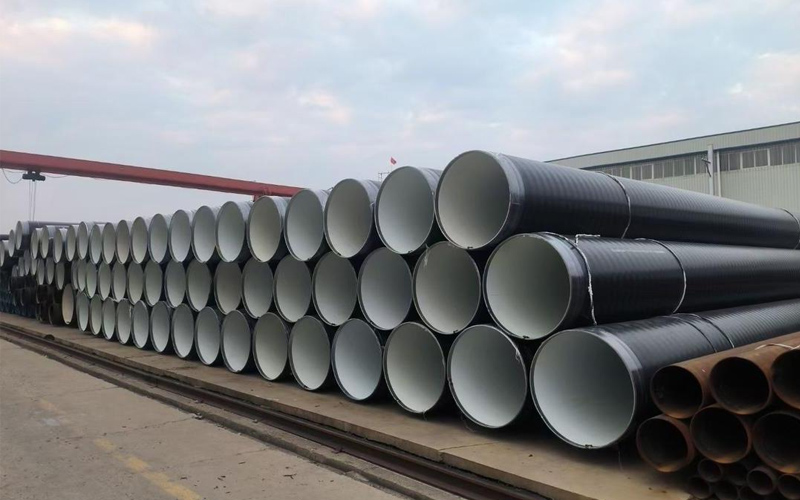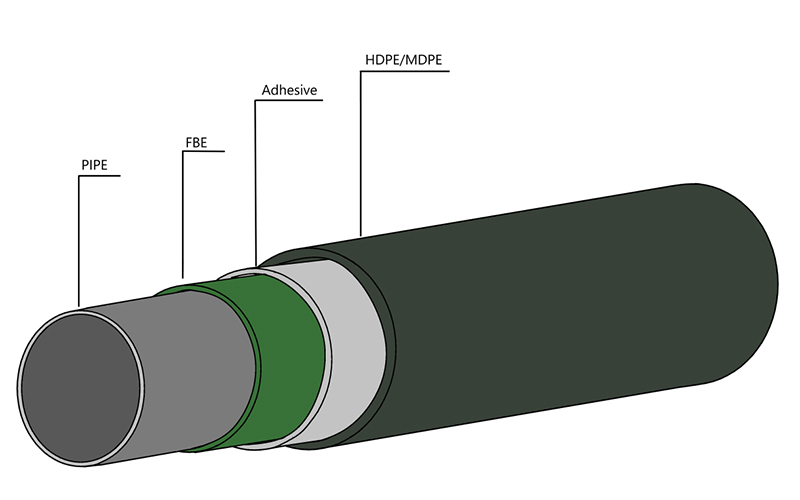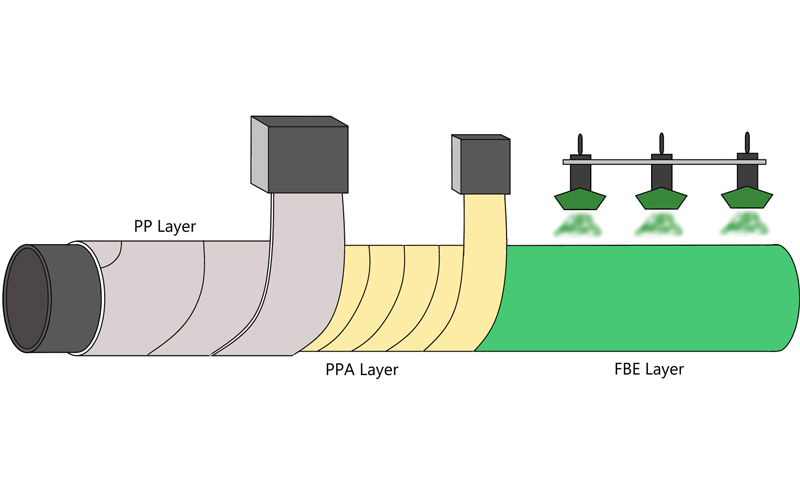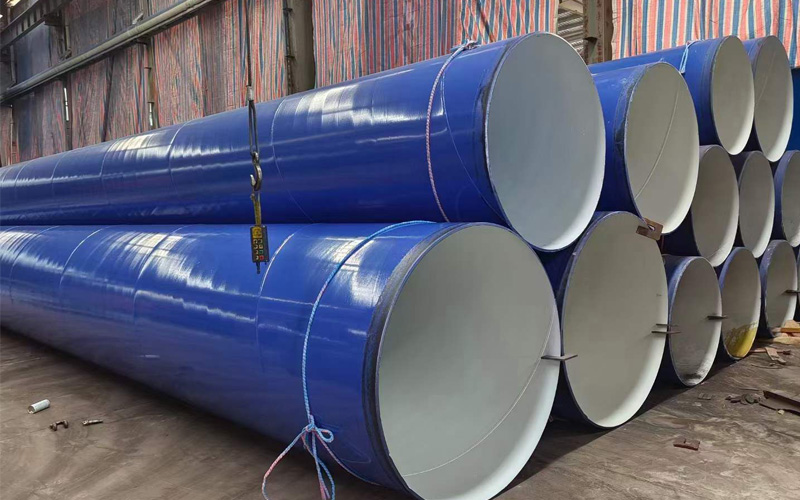What is ASTM A252 pipe? Engineering basic solution.
In the demanding field of large-scale buildings and infrastructure development, the integrity of the basic elements is very important. ASTM A252 pipeline support is a key engineering solution, which is specially designed to bear huge loads and harsh environmental conditions, such as structural foundation piles. This specification specifies the manufacture of welded steel pipe piles, which are mainly used to transfer structural loads to the depths of stable soil or bedrock. Let’s explore in depth what makes ASTM A252 pipeline indispensable.

Understanding the Core: what is ASTM A252 pipe?
ASTM A 252 is a technical standard issued by the international organization of ASTM. This standard specifies the requirements for seamless and welded steel pipe piles used as structural foundations. Different from the pipeline specially designed for fluid transportation, ASTM A252 pipeline has axial (compressive) and bending strength, which is crucial for supporting bridges, buildings, offshore wind turbines, ports and retaining walls. Use an impact hammer or vibration driver to drive them into the ground, forming deep and solid foundations.
Manufacturing accuracy: the birth of the pile.
ASTM A252 pipe piles use spiral submerged arc welding (SSAW) for small and medium diameter pipe piles, and straight seam welding (LSAW) for large diameter (>1.5m) pipe piles. It works like this:
1. Plate Preparation: High-strength steel plates, conforming to the required grade and chemistry, are cut to specific widths and lengths.
2. Edge milling: the edges of the Plate is accurately milled to ensure clean and uniform surface, thus achieving the best welding quality.
3. Forming: cold forming the plates into a cylindrical shape by using a special presses or rollers.
4. Welding: Submerged arc welding (SAW) process is used for internal and external welding of the longitudinal weld. This involves feeding a continuous wire electrode under a blanket of granular fusible flux. The flux protects the molten welding metal from atmospheric pollution, thus achieving deep penetration, high deposition rates and excellent welding integrity, which is very important for the performance of weld.
5. Sizing and straightening: the welded pipe is subjected to sizing (ensuring accurate diameter) and straightening procedures.
6. Inspection & Testing: Rigorous non-destructive testing (NDT) like ultrasonic testing (UT) or radiography (RT) is performed on the weld seam. Mechanical testing (tensile strength, yield strength) and visual inspections ensure that ASTM A 252 requirements are met.
7. End Finishing: Pipe ends are typically beveled to facilitate field welding if splicing is necessary.
The Unique Advantages: Why Choose ASTM A252 pipe Piles?
ASTM A252 pipeline has unique advantages and is the first choice for demanding basic applications.
Engineered for High Load Capacity: the standard specifies minimum tensile and yield strengths, guaranteeing structural performance under immense compressive loads and bending moments encountered deep underground or underwater.
· Gr.2: Minimum Yield Strength ≥ 207 MPa (30 ksi); Minimum Tensile Strength ≥ 310 MPa (45 ksi)
· Gr.3: Minimum Yield Strength ≥ 310 MPa (45 ksi); Minimum Tensile Strength ≥ 455 MPa (66 ksi)
2. Excellent weld integrity (LSAW): Submerged arc welding technology used in LSAW manufacturing can produce consistent, high-quality and high-strength welds along the whole length, which is very important for the structural integrity of the pile under piling stresses and working loads.
3. Corrosion resistance Considerations: the standard itself takes into account the use of protective measures. The fluff can be easily coated or for cathodic protection systems. Crucially, ASTM A252 explicitly includes requirements to ensure compatibility with cathodic protection, a key characteristic in marine environments.
4. Significant Delivery & Installation Advantages:
· Faster installation: A reduction in the number of welds necessitates a significantly reduced on-site presence. Studies show that installation efficiency can be improved by up to 35% when compared to methods requiring frequent splicing of shorter sections.
· Enhanced quality control: Factory welding is more reliable than field welding. This is because it is carried out under controlled conditions. Field welding is exposed to weather and site variables.
· Reduced risk and cost: Minimising field welds lowers labour costs, inspection costs and the risk of weld defects compromising pile integrity.
5. Proven durability and long service life: When used with the right protection for rust in the soil or water, ASTM A252 piles can last for many years. They often last more than 50 years, as seen in big building projects.
Where Strength Meets Demand: Top Application Scenarios
ASTM A252 pipe piles are the backbone of modern heavy infrastructure:
1. Offshore Wind Foundations : Used as monopiles driven deep into the seabed to support massive wind turbine towers. They must resist enormous axial loads, bending moments from wind/waves, and severe marine corrosion.
2. Bridge Foundations & Deep Foundations : Essential for bridge piers, abutments, and high-rise buildings where surface soils are weak. They transfer loads deep into competent bearing strata, providing stability and preventing settlement.
3. Port & Harbor Structures : Used for wharves, piers, bulkheads, and dock walls. Resist lateral earth and water pressures, vessel impacts, and corrosive marine environments.
Addressing Common Technical Questions (Q&A)
Q1: Can ASTM A252 pipe piles be used in seismic zones or earthquake-prone areas?
A: Yes, absolutely. ASTM A252 Grade 3 pipe piles are specifically engineered and qualified for use in high seismic regions. They meet the stringent requirements outlined in building codes like the International Building Code (IBC), Section 1808.2, for deep foundation elements in Seismic Design Categories (SDCs) up to and including areas corresponding to Zone 4 (High Seismicity). Gr. 3’s higher yield and tensile strength provide the necessary ductility and energy absorption capacity.
Q2: How can settlement be minimized when using A252 piles in soft soil conditions?
A: In very soft or compressible soils where end-bearing capacity is low or where significant settlement is a concern, adding an enlarged base (“pile shoe” or “enlarged tip”) to the bottom of the ASTM A252 pile is a highly effective solution. This patented under-reaming or pressure grouting technology creates a bulb or larger bearing area at the pile tip. This significantly increases the end-bearing capacity and distributes the load over a wider area of soil, dramatically reducing settlement potential compared to a straight-sided pile toe. Consult manufacturers about specific proprietary systems compatible with driven pipe piles.
The Unshakeable Foundation
· ASTM A252 pipe, particularly Grade 3 manufactured via the LSAW process, represents the pinnacle of engineered foundation piling. Its rigorous standards guarantee high strength (Gr.3: Minimum Yield Strength ≥ 310 MPa ; Minimum Tensile Strength ≥ 455 MPa) and structural integrity. The inherent compatibility with long-term corrosion protection strategies, especially cathodic protection, ensures durability in the harshest environments like offshore wind farms. The unparalleled advantage of supplying custom lengths up to 24 meters delivers substantial project value by reducing field welds by approximately 35%, accelerating installation, lowering costs, and enhancing overall foundation reliability.
From anchoring the future of renewable energy with offshore wind monopiles (50% of use) to supporting vital bridges (30%) and bustling ports (15%), ASTM A252 pipe piles provide the deep-seated strength and resilience upon which modern civilization builds with confidence. When the ground is uncertain, ASTM A252 delivers certainty.
Get Your Custom Steel Pipe Quote Today!
Provide us with your project details (like application, specifications, quantity). Our experienced team will respond with a tailored solution and competitive quote within 24 business hours.
Related Articles
ASTM A53 vs. API 5L: A Guide to Selection and Application
Introduction:Technology differences determine success or failure, and selection needs to be “precise”
Steel Density Analysis: Core Differences between Mild and Medium Carbon Steels and Industrial Applications
3LPE coated steel pipe: a solid barrier in the field of industrial corrosion protection
3LPP coated pipe: anti-corrosion guard in high temperature and high pressure environment
FBE steel pipe: the technological armor of the steel defense line
HOT TAGS
latest posts
- FBE steel pipe: the technological armor of the steel defense line
- Precision Engineering Redefined Dubai’s Stadium Dome Construction
- An Engineer’s Guide: A Deep Dive into UOE vs. JCOE LSAW Steel Pipe Manufacturing
- Floating Pipelines: Key Views on Offshore Dynamic Risers & Marine Transportation Pipelines
- The Dance of Spiral Forming: How SSAW Steel Pipes Are Made














